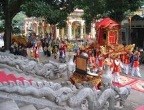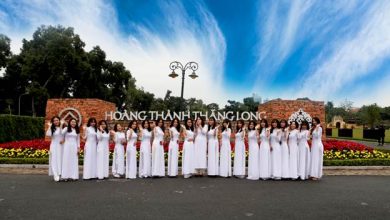Thematic exhibition titled “From Thăng Long to Phú Xuân and Gia Định”
On the occasion of the 60th anniversary of the tripling of 3 cities Hà Nội – Huế – Sài Gòn (8 October 1960 – 8 October 2020), Thừa Thiên Huế Department of Culture and Sports, Thăng Long- Hà Nội Heritage Conservation Centre and Ho Chi Minh City Museum jointly inaugurated the thematic exhibition “From Thăng Long to Phú Xuân and Gia Định” on the afternoon of October 7 at Thừa Thiên Huế History Museum. In attendance at the opening ceremony were Ms. Nguyễn Thị Ái Vân, Vice Chairwoman of Thừa Thiên Huế Provincial People’s Council, Mr. Nguyễn Thanh Bình, Vice Chairman of Thừa Thiên Huế Provincial People’s Committee.
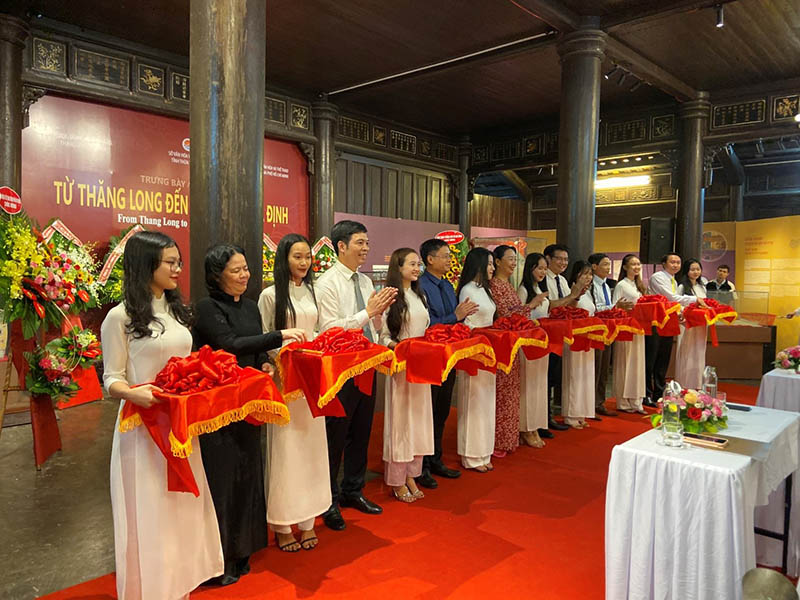
Band-cutting ceremony to inaugurate the exhibition.
The thematic exhibition “From Thăng Long to Phú Xuân and Gia Định” features more than 80 antiques, typically ceramicware from the 10th to the 19th centuries (spanning different Vietnamese feudal dynasties from the Lý – Trần Dynasties to the Nguyễn Dynasty), nearly 200 important and rare documentary images, diagrams, maps and more than 50 images and videos introducing Hà Nội – Huế – Ho Chi Minh City. and nearly 1,000 books written on the history of formation, development, exchanges and the brotherly relationship between the three cities of Hà Nội – Huế – Sài Gòn.
The content of the exhibition covers four main themes, namely: Thăng Long Captial City and The Central Sector of the Imperial Citadel of Thăng Long – Hà Nội; Thuận Hóa – Phú Xuân – Thừa Thiên Huế, a journey of more than 700 years; Gia Định from the 17th to the 19th century; Hà Nội – Huế – Sài Gòn: trees of the same root and siblings of the same family.
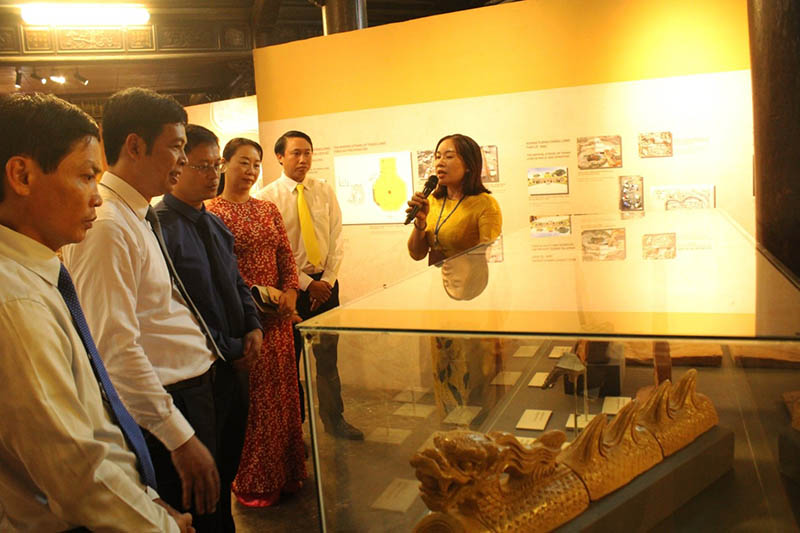
Delegates visiting the exhibition.
In 1010, King Lý Thái Tổ decided to move the capital from Hoa Lư to Thăng Long. Throughout the Lý, Trần, Lê, Mạc, Lê Trung Hưng dynasties, Thăng Long was always the capital and the Centre of Great Viet civilization, the convergence of national culture. During the Tây Sơn and Nguyễn dynasties, the capital moved to Phú Xuân – Huế, but Thăng Long – Hà Nội remained a major cultural and economic Centre of the country.
Hóa Châu (Huế) was originally the Indrapura region of the Champa kingdom and since the 14th century it was integrated into Great Viet. In 1802, Phú Xuân – Huế became the capital of the Nguyễn Dynasty, the Centre of all sources of strength of a unified Vietnam.
Gia Định was the convergence of all resources that determined the success of the “realm-expanding” process of the Vietnamese nation. From Gia Định, land reclamation and sovereignty establishment quickly spread to the entire Southeast and Southwest regions. In 1757, the last part of the Southwest region was taken by Nguyễn Lords, marking the completion of Vietnam’s expansion of its realm.
Thăng Long – Phú Xuân – Gia Định, later known as Hà Nội – Huế – Sài Gòn/Ho Chi Minh City, have historically become three typical cultural centres of the country, symbolizing the spirit of great solidarity of the nation.
Speaking at the opening ceremony, Director of Thừa Thiên-Huế Department of Culture and Sports Phan Thanh Hải stressed that Hà Nội – Huế – Sài Gòn are three cultural centres that represent the vitality of the Vietnam, the rippling strength of cultural exchange and fusion of a unified nation-state.
It is that cultural foundation that serves as the adhesive and the common denominator of the Vietnamese community, the sustainable root of patriotism, the will to gain independence and unification for the country, the spirit of the great. national solidarity.
Building on the sustainable cultural values that have become deeply ingrained in the blood and flesh of Vietnamese people, three cities representing the three regions of North-Centre-South held a brotherhood ceremony on 8 October 1960, at the Ba Đình – Hà Nội Club. This was an important cultural and political event that marked a new milestone, symbolizing the solidarity of the Vietnamese people in general, and of the people of Hà Nội – Huế – Sài Gòn in particular.
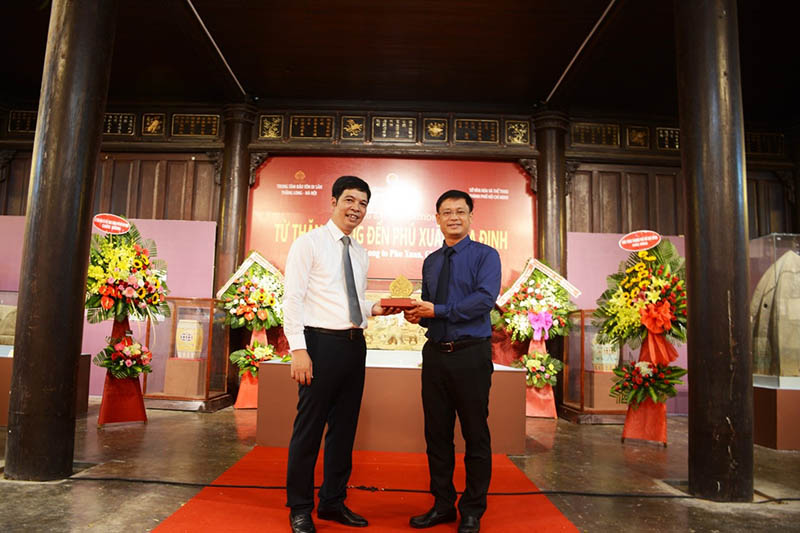
Original souvenirs of Thăng Long Imperial Citadel.
Speaking for the three participating organizations, Mr. Nguyễn Thanh Quang, Deputy Director of the Thăng Long – Hà Nội Heritage Conservation Centre expressed his belief that through the exhibition, the inseparability and loyalty of the three cities and localities will be all the more fostered and developed, enhancing the cooperation and exchange of both common cultural features and distinct characteristics among the three regions. In the coming time, the Thăng Long – Hà Nội Heritage Conservation Centre will continue to cooperate with the Thừa Thiên Huế History Museum and the Ho Chi Minh City Museum to introduce to the public unique collections of artifacts, the precious cultural heritage of the nation preserved in the three respective agencies.
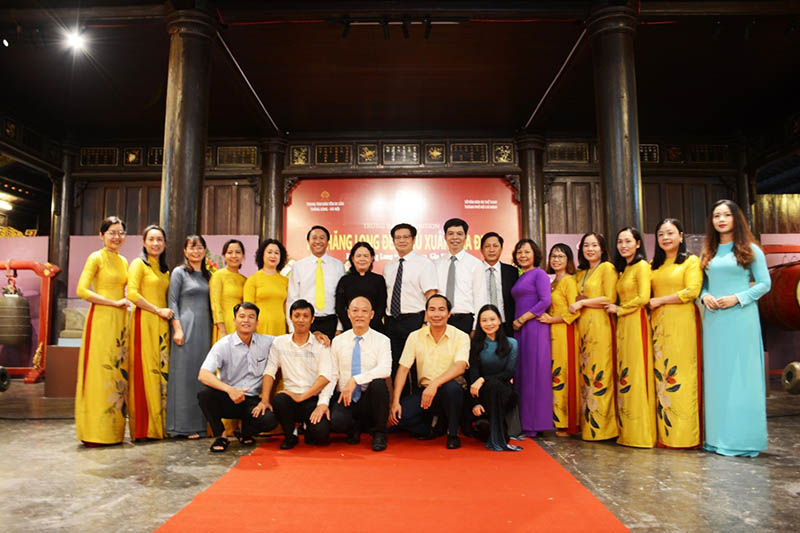
Group photo
The exhibition “From Thăng Long to Phú Xuân and Gia Định” is a practical activity to celebrate the 60th anniversary of the brotherhood of Hà Nội – Huế – Sài Gòn. The event is all the more meaningful when it is held on the occasion of the 1010th anniversary of Thăng Long – Hà Nội and the 66th anniversary of the liberation of the capital city.
The exhibition is open from October 7 to October 31, 2020.
Thăng Long – Hà Nội Heritage Conservation Centre

